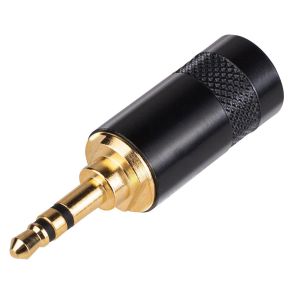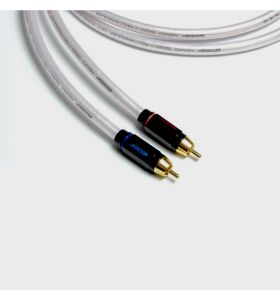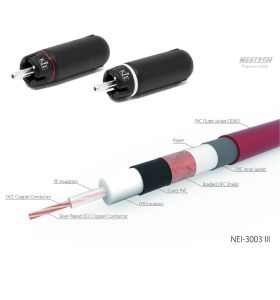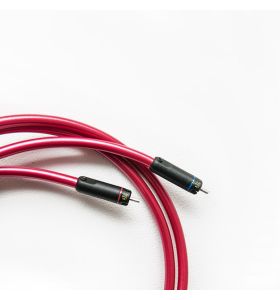AUDIOQUEST THUNDER - High Current
Low-dispersion 3-pole AC power cable | Solid copper PSC+ and LGC | Cross-section: 2x4.17mmq and ground 3.31mmq | For Power Amplifiers
SPEDIZIONE GRATUITA
Se effettui un ordine superiore a € 300 con due o più prodotti, la spedizione sarà gratuita. Le tempistiche stimate di spedizione sono indicate.
Paga in modo semplice e sicuro con Carta di credito, Contrassegno, AMEX, PayPal e Bonifico bancario. La tua privacy è garantita da connessioni sicure.
Tutti i prodotti sono coperti da Garanzia convenzionale di 2 anni. Risolviamo problemi di qualsiasi natura con professionalità e correttezza.
Solo tramite eMail dal Lunedì al Venerdì dalle ore 9:30 alle 15:00.
Low-dispersion/noise-dissipating 3-pole AC power cable with DBS at 72V. Schuko and IEC C15 terminated. Impedance Characteristic Zero. For Power Amplifiers
Available lengths: 1 metre and 2 metres selectable from the drop-down menu.
FEATURES
Alternating Current (AC), is an almost perfect power source. AC power technology is more than a century old and was never designed to meet the exacting standards of today's high-resolution audio-video components. AC noise is present in the utility source, and is therefore exacerbated by induced radio-frequency noise (detected by the AC power cable) and coupled to component power supplies and circuit ground. This creates distortions and low-level signal losses through the ‘masking effect’. In addition, power amplifiers may require immense transient current reserves for their power supplies to react and stabilise during dynamic audio passages. Most AC power cables and power supply regenerators, although useful to a certain point, are not up to the task.
Power amplifiers present a real challenge for any AC power source, as the transient current requirements (albeit of short duration) can be many times higher than the average current consumption (RMS). Power amplifiers are also unique compared to all other components in that current consumption is dynamic, not constant, and changes with the volume and content of the audio signal. Although many AC power cables may have low DC resistance to allow for some of these requirements, the characteristic impedance of the AC cable is equally responsible for ensuring uncompromised performance. Many premium AC cables tighten or compress the audio transient because their characteristic impedance limits the transient current.
Directionality
All drawn metal wires or conductors have a non-symmetrical, and therefore directional, grain structure. AudioQuest controls the resulting RF impedance variation so that noise is discharged from where it will cause distortion. The correct direction is determined by listening to each batch of metal conductors used in each AudioQuest audio cable. Arrows are clearly marked on the connectors to ensure superior audio quality.
Dielectric polarisation system with radio frequency trap
All insulation between two or more conductors is also a dielectric whose properties affect signal integrity. When the dielectric is unbiased, dielectric entanglement (non-linear absorption and release of energy) causes different amounts of time delay (phase shift) for different frequencies and energy levels, which is a real problem for time-sensitive multi-optical audio. The inclusion of an RF trap (developed for AudioQuest's Niagara series of PowerQuest products) ensures that RF noise is not induced into the signal conductors by DBS field elements. (DBS, US Patent 7,126,055 and 7,872,195 B1)
Ground Noise-Dissipation Technology
AC ground wires provide protection against current wiring errors, but they also act as antennas. Therefore, they are subject to radio frequency (RF) induced noise. This RF noise excludes component power supplies and is typically coupled directly to the most sensitive audio-video circuits in the system. AudioQuest's patented ground noise dissipation greatly reduces this distortion, producing unprecedented levels of noise dissipation across the widest possible bandwidth (range) of radio frequencies. Our unique circuit topology utilises a common-mode phase cancellation matrix in concert with proprietary dielectric materials that provide additional differential linear filtering. (US Patent No. 9,373,439)
High-purity conductors - Long-grain copper (LGC) with perfect surface (PSC)
A carefully refined combination of high-purity long grain copper (LGC) and high-purity perfect surface copper (PSC) conductors prevent filament interaction, a major source of ear-fatiguing transient intermodulation distortion. LGC enables a smoother and clearer sound than standard OFHC (Oxygen-Free-High-Conductivity) copper. The exceptionally smooth and pure Perfect-Surface copper further eliminates roughness and significantly increases clarity compared to OFHC, OCC, 8N and other special copper processing and treatments.
Uncompressed high-current transfer
With current capability of 20 amps RMS @ 125 VAC 50/60 Hz (16 amps RMS @ 220-240 VA 50/60 Hz), Thunder/High-Current can withstand transient peak currents several times its continuous (average) RMS rating. This makes Thunder / High-Current ideal for a wide assortment of AC conditioners, power regenerators, AC isolation transformers and AC battery backup devices, as well as any power amplifier, amplified subwoofer, amplified speaker, amplified receiver or integrated amplifier.
- More than perfect surface solid copper conductors (PSC+) plus long grain copper (LGC)
- Terminations: silver on red copper and beryllium
- Conductor cross-section: 2x4.17mmq and 3.31mmq ground
- RF Drain Metal: 6% solid silver
- Uncompressed high current transfer
- Ground Noise Dissipation technology (US Patent No. 9,373,439)
- Zero characteristic impedance (50Hz - 1MHz)
- 72VDC dielectric bias system (US Patent No. 7,126,055)
- Directly controlled drivers




































